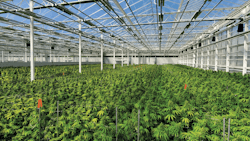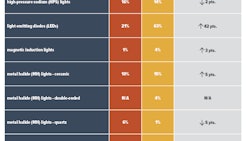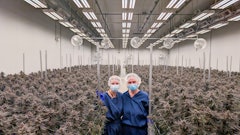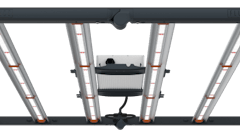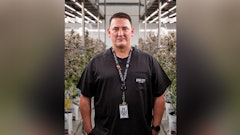Planning always comes with some level of risk, as there is always the potential for unexpected circumstances, especially in an industry as unpredictable as cannabis (not to mention amidst a global pandemic). Challenging regulations, with variances in local, state, and federal mandates, in addition to a lack of services and support most federally legal businesses are afforded, can be difficult enough as it is to navigate. Even with the most careful planning, surprises can come up, such as finding out, after you’ve already invested in a facility, that the local utility company won’t be able to supply the power you need to fully operate.
That’s what Ed Dow, CEO & founder of Massachusetts-based Solar Therapeutics, discovered, as you’ll read in this month’s cover story. He also experienced other unexpected hurdles when building his company, as you’ve no doubt experienced yourself. In Dow’s case, those were incompatible zoning laws, higher-than-anticipated fees and, as noted, a lack of power. Dow could have given up, but instead he negotiated and innovated, including creating his own power infrastructure that significantly reduced the company’s energy costs.
Before moving ahead with any plans, whether they be strategic or born out of surprise challenges, there are ways to minimize risk. For example, Gretchen Schimelpfenig, technical director for the Resource Innovation Institute, writes about how to commission equipment and why it’s helpful for cannabis companies to go through this process of double checking and testing functionality. Making sure systems are operating properly before launch or during a renovation can save a lot of stress and money in the long run.
Examining metrics before planning to move in new directions, especially when those moves involve big investments, also is crucial. Numbers, unlike people, don’t have preferences and biases. As you’ll read in this year’s “State of the Lighting Market” report, it took Denver-based LivWell several years of trials before deciding to retrofit its indoor facility with new lights. Although the company decided the energy savings and boosts in yield were worth the investment, it didn’t happen overnight—it’s been a five-year process to convert. Without patience and planning, a rushed decision or installation could have been detrimental to both the health of the crops and the company.
As you continue to steer the direction of your company and discuss plans for the coming years, examine what is going really well and how you can build on that, as well as what’s not working. As Loren Picard and Andrew Olsson, executives from Oregon’s High Desert Flower, wrote in a recent guest column on CannabisBusinessTimes.com, “… What tasks can you focus on today that will give you the biggest return for your time invested by getting you closer to your goals?”
And as Solar Therapeutics found, the company's focus of creating a custom-built power source both aligns with its sustainability goals and saves money. The unexpected model built from a challenge has been working so well that the company plans to use it as they expand to new states—a welcome surprise.









